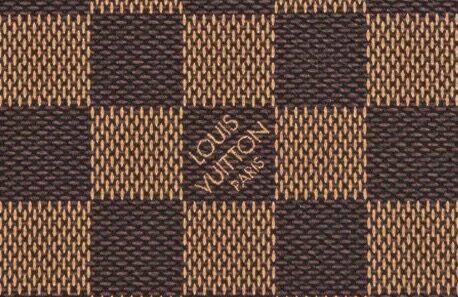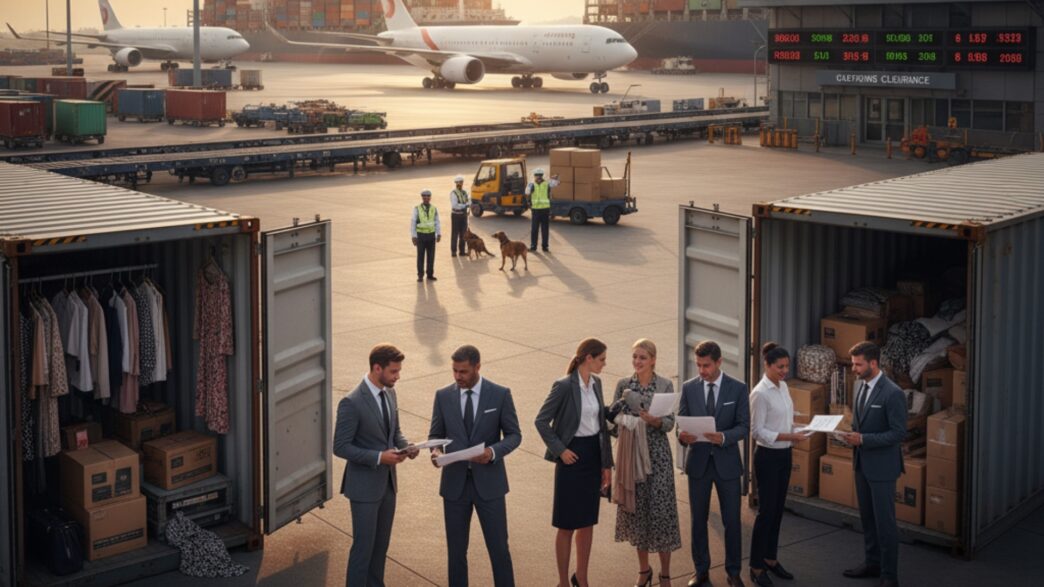“Fashion is the armor to survive the reality of everyday life,” observed fashion photographer and historian Bill Cunningham. However, the armour is now increasingly fake, poor in quality and almost as real as the reality of life.
The global counterfeit industry is a $467‑billion illicit trade $467 billion illicit trade. In fact, clothing, footwear and leather goods account for roughly 62% of counterfeit items seized worldwide. Given today’s globalised supply chains, falling costs of running global supply chains, driven by technology, has made counterfeit trading a global cross-border phenomenon [1].
This flood of fakes erodes revenues, damages brand value, and occasionally slaps toxic dye onto your skin in the name of “discount couture.” As commerce becomes more digital and global, counterfeiters exploit online marketplaces and international shipping to reach customers. Around 65% of seizures now involve small parcels in mail or courier channels – the preferred route for e-commerce knock-offs. Faced with this threat, governments are stepping up intellectual property (IP) enforcement at the borders.
John Lennon famously crooned, “imagine there’s no countries,” but – sorry John- there are countries, there are borders, and there are counterfeits; a reality that makes customs agents fashion’s unlikely front-row VIPs.
Border Enforcement: Fashion’s Frontline Defense
Border enforcement of intellectual property rights means customs officers detect, detain, and seize goods infringing trademarks, copyrights, or registered designs as they cross a country’s borders. The toolkit includes:
- Customs recordal: pre-registering IP rights so officers know what to look for.
- Risk-based inspections: using data analytics to flag suspicious shipments.
- Rights-holder collaboration: brands train customs to spot fakes and confirm seizures.
This is where fashion law meets frontline defence – and the stakes are very real. In this article, I intend to discuss border controls in major jurisdictions.
India: From Runway to Border Check
India’s fashion scene is booming and so is the traffic in counterfeits. To fight back, India deploys a solid legal and enforcement framework across trademarks, designs, and copyrights:
- Trademarks Act 1999: names, logos, slogans – even handbag shapes- can be registered.
- Designs Act: protects product aesthetics such as dress patterns or textile prints for up to 15 years.
- Copyright Act: shields original artistic works like fabric prints or sculpted jewellery.
Customs in Action
Under the Customs Act and IPR (Imported Goods) Enforcement Rules, 2007, Indian Customs can seize both imports and exports of fake goods. Brands record their rights via an e-filing portal, upload product images and identifiers, and train officers. Once a shipment is flagged, officials notify the brand, confirm the counterfeit, and destroy the goods.
Case in point: Chennai Customs recently confiscated 12,000 pairs of fake Nike, Adidas, and Reebok shoes smuggled from China and falsely declared as “unbranded purses,” a haul worth about ₹3.5 crore (≈ USD 420,000) [2].
E-commerce makes detection harder – fakes increasingly arrive in low-value courier parcels. But India’s Consumer Protection (E-Commerce) Rules, 2020 now require online platforms to clamp down on counterfeit listings.
India’s enforcement tools are sharp, but brands must record rights, assist Customs, and monitor their supply chains. Border vigilance is no longer optional.
United States: Fashion’s Frontline Bouncer
U.S. Customs and Border Protection (CBP) is the industry’s de facto bouncer. Counterfeit fashion – handbags, jewellery, apparel – is consistently one of its top seizure categories.
Under the Tariff Act, CBP can detain and seize goods infringing registered trademarks or copyrights. A quick, low-cost e-recordation process empowers officers to flag fakes. Once a shipment is confirmed counterfeit, CBP seizes and literally incinerates the goods.
Criminal penalties bite hard: up to 10 years in prison and $2 million in fines for trafficking in counterfeits.
By the numbers:
- August 2025: CBP in Louisville seized 7,000 pairs of counterfeit Van Cleef & Arpels earrings, fake retail value $30.37 million, shipped from Hong Kong [3].
- 2021: CBP at the L.A./Long Beach Seaport intercepted **13,586 counterfeit luxury items – **Gucci, Chanel, Fendi, YSL, Louis Vuitton – in a Homeland Security joint operation [4]
With fast-track recordation, zero-cost enforcement for brands, and stiff criminal penalties, CBP shows how border enforcement can evolve with the times. Not just a fashion faux pas – it’s a felony with accessories.
European Union: A Unified Front
Nothing ruins a Paris Fashion Week debut like your design debuting early – on a fake tote. The EU operates one of the world’s most streamlined border-IP regimes.
- Regulation (EU) No. 608/2013 lets a brand file a single Application for Action (AFA) with any member state; the notice then covers all 27 EU countries.
- Customs may act at the brand’s request or ex officio, making the system proactive.
Scale: In 2022, EU customs detained 86 million counterfeit items worth over €2 billion [5]. Many counterfeiters try to import parts separately – blank handbags and fake logos – to assemble later. France and Germany now target postal centres, where small-parcel fakes flood in.
The EU also works with online platforms to curb fakes before shipment. Agencies like OLAF and the EU IP Observatory coordinate cross-border actions and intelligence.
United Kingdom: Post-Brexit Parallels
Since Brexit, the UK runs its own system, closely mirroring the EU model but managed by HM Revenue & Customs (HMRC) and UK Border Force.
- Rights holders file a UK-specific AFA.
- Customs may detain suspect goods ex officio and follow a simplified destruction procedure unless the importer objects.
In 2023, UK Border Force seized nearly one million counterfeit goods worth about £200 million[cite]. Strong consumer demand and complex supply chains make customs enforcement an essential bulwark.
China: Strengthening Border Enforcement
China remains the world’s top exporter of counterfeit fashion – but it’s also stepping up enforcement as it builds an IP-driven economy.
- The General Administration of Customs (GACC) allows rights holders to record trademarks and copyrights so officials can detain fakes request-based or ex officio.
- Confirmed fakes are seized and destroyed; large-scale cases can trigger criminal investigations.
Recent national crackdowns combine data-sharing with courts, faster injunctions, and tighter monitoring of cross-border e-commerce parcels. Many brands now train Chinese customs to distinguish real from fake and avoid accidental seizures of legitimate shipments.
The Micro-Parcel Challenge
Counterfeiting has gone micro: tiny parcels, global headaches.
Traditional customs controls were designed for container loads, not a blizzard of low-value e-commerce shipments. Agencies now:
- use advanced analytics to target suspicious small parcels,
- raise scrutiny on “de minimis” shipments once waved through, and
- partner with online platforms to stop fakes before they ship.
International cooperation is critical: a seizure in one jurisdiction often provides intelligence for the next.
The Take-Home for Fashion Brands
Border enforcement is no longer a side show. It’s core strategy:
- Record your IP with customs in every key market.
- Train officers to spot your products and typical counterfeits.
- Monitor digital listings and shipping trends to anticipate new smuggling tactics.
Fake fashion doesn’t slow down – so neither can your enforcement. After all, what’s the point of haute couture if it arrives in bubble wrap from a Shenzhen back alley?
References:
1 Counterfeit and pirated goods | OECD
2 12,000 pairs of fake branded shoes seized | Chennai News – Times of India
3 $30 million in counterfeit jewelry seized by Louisville CBP | U.S. Customs and Border Protection
4 The Truth Behind Counterfeits | U.S. Customs and Border Protection
5 86 million fake items with a value of more than EUR 2 billion detained in the EU in 2022 – EUIPO



















